Chevy's New Silverado HD Trucks Are All About Towing
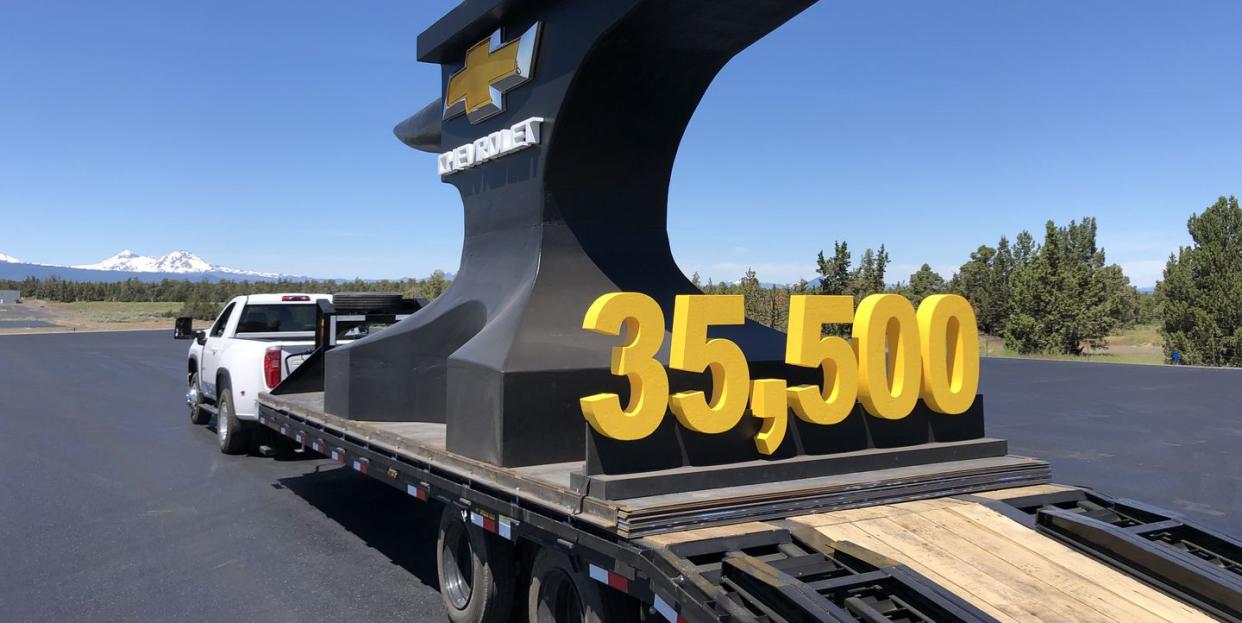
Engines: 3-liter I6, 277 hp and 460 lb-ft of torque (1500 Duramax); 6.6-liter gas V8, 401 hp and 464 lb-ft of torque; 6.6-liter turbocharged diesel V8, 445 hp and 910 lb-ft of torque / Transmission/transfer case: Six-speed auto (6.6-liter gas) or 10-speed automatic (diesels) / EPA Fuel Economy / (1500 Duramax): Not yet announced, but we estimate 24 mpg combined / 0-60 (3500 Duramax 4x4 Crew Cab Dually): 7.4 seconds / 0-60 for that truck while towing 18,000 pounds: 19.9 seconds Suspension: Independent front, solid axle rear with leaf springs / Max towing Capacity: 35,500 pounds
The heavy duty pickup wars are an ongoing exercise in oneupmanship, most of it purely academic. Everybody lays claim to superlatives, as long as they last. It gets silly-years ago, when Chevy's 6.6-liter Duramax diesel hit 397 horsepower, Ford immediately re-rated its engine to 400 horsepower.
So I figured that with the 2020 HD trucks, Chevy would torpedo Ram's 1,000 lb-ft of torque by tuning its trucks to, I don't know, 1,005 lb-ft? But no. They're not playing that game. The diesel trucks make 445 horsepower and 910 lb-ft of torque. Ford's diesel makes 450 horsepower, allowing them to claim best-in-class horsepower. So Chevy is just getting stomped by everyone, huh?
Well, no. The most bodacious of the HD trucks, the crew cab dually 4x4, runs 0-60 in 7.4 seconds, two seconds ahead of the equivalent Ram. That advantage remains even when towing an 18,000-pound trailer-in that case, the Chevy's 0-60 time is 19.9 seconds. A big part of the credit goes to the Chevy's new Allison 10-speed automatic, which offers four more ratios than either Ford or Ram. That's a hard thing to brag about, though: Best-in-class number of gears isn't really a thing.
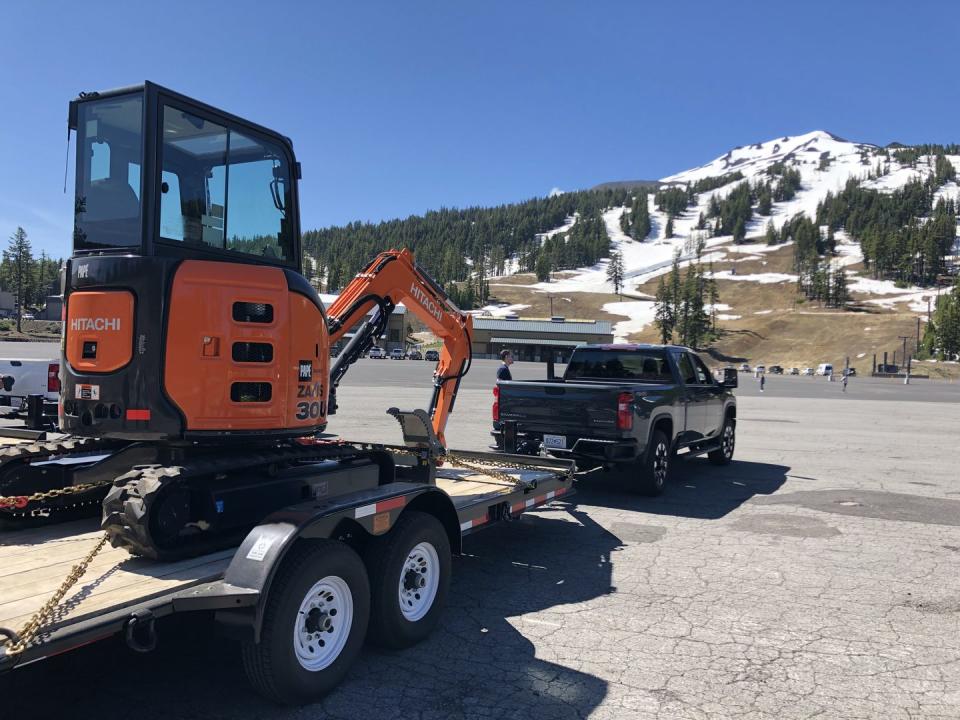
GM didn't mention where Ford fits into the drag-race scenario, but did offer a bit of trash-talk about Ford's solid-axle front end. Some time ago, GM bought a Ford Super Duty and ran it through their own durability testing. About halfway through, the truck felt like the front end was falling apart, and engineers had to go through and tighten everything up. They made it about another 10 percent of the way through and then had to tighten everything again, at which point they gave up and sold the truck back to the dealer.
Their point was to show that GM's independent front suspension works just fine in a heavy-duty truck, reducing fatigue on both the driver and the truck itself. Meanwhile, over at the Ford factory in Dearborn, I've heard them say that IFS is the hallmark of a "coffee-shop truck." Which front suspension you prefer depends on whether you're typically sliding your axle into tree stumps or, I don't know, driving on bumpy roads.
Anyway, GM's point is that we should stop obsessing on towing stats and concentrate on how the trucks actually work in the real world.
So GM claims that its tow ratings aren't based on some wildly specific combination of attributes that nobody would ever actually order. Most of the time, however a truck is set up, it'll be near the top of the class in towing. And the new 6.6-liter gas trucks are "altitude rated," meaning that their tow rating doesn't change if you're in the mountains. On gas-powered HD trucks, which don't benefit from a turbo's altitude compensation, Ford cuts its rating two percent for every 1,000 feet of altitude.
That gas 6.6 puts out some beastly power numbers (401 hp, 464 lb-ft) but it's hauling around a whole lot of truck, even when empty. So fuel economy isn't its strong suit-I saw maybe 15 mpg unladen, and more like 6 or 7 when hauling an excavator in the mountains.
But if you're not hauling stupidly heavy things every day, the gas trucks could make a lot of sense. Particularly because this is one of the few HD trucks I've climbed into, looked at the price and said, "That's not too bad, for what you get." I drove a fairly decked-out LTZ 4x4 with the Z71 off-road package, heated and cooled front seats, power up/down tailgate and much else that stickered for $58,685.
There are definitely half-ton trucks that cost more than that.
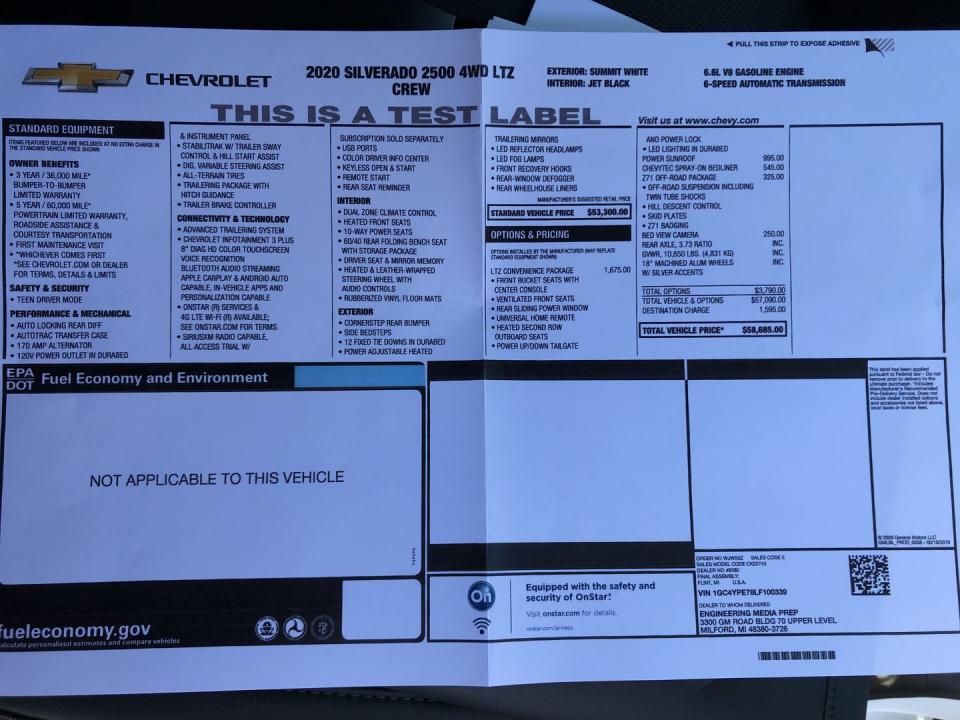
If there's one disappointment about the 6.6 gas motor, it's that it won't be offered with a shaker hood scoop reading "6.6 litre". Yes, I asked. And on the topic of the 2020 trucks' restyled front ends, they look best in black. The chromed-out versions might cause snow blindness.
The diesel trucks were noticeably quicker than the gas ones, and more at ease towing. One Duramax truck was hooked up to a trailer that purportedly weighed 35,500 pounds-the new maximum tow rating, which is achieved with a rear-wheel-drive regular-cab long-bed dually.
Besides physically hauling around whatever you're hauling, GM worked hard to make the towing experience less stressful and confusing. To that end, every individual truck has its tow rating stamped on a VIN badge on the door sill. That's a simple move that eliminates a lot of confusion, given that tow ratings vary depending on engine, driveline, bed length, rear axle ratio, interior color, and the position of Jupiter.
Cameras, Lots of Cameras
They also added cameras. Lots of them. There are cameras in front and cameras behind, a camera for the bed and one for the inside of your trailer. The cleverest angle, though, is "invisible trailer," a view developed with Valeo that combines multiple angles to make it appear as though you're looking straight through the back of your trailer. No more wondering if there's a car lurking off the rear corner of your boat before you change lanes.
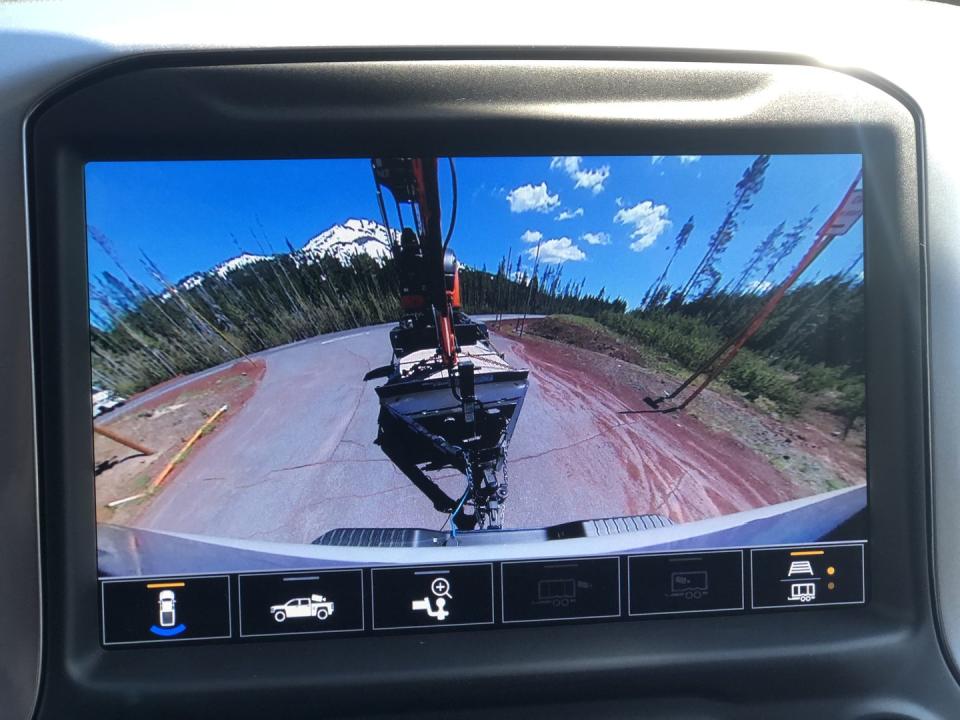
They also paid attention to the little annoyances of towing. Like, even if you have a rear-view camera and get the hitch ball lined up, you always have to remember that your truck will lurch forward a couple inches after you put it in park, thereby screwing everything up. GM's solution: when you've got the rear camera set for the hitch view, the truck automatically engages the e-brake when you shift from reverse to park. No lurch. Nice.
Oh, and one other clever move: when a trailer is hooked up and the truck is locked, disconnecting the trailer will set off the alarm and send a notification to your phone. So you don't have to worry about backing up against a wall to make your trailer hard to steal out of the hotel parking lot.
And, There's a New Diesel
Chevy also had a new diesel on hand: the 1500 Duramax, a 3.0-liter I6 that joins the fray against Ford and Ram's light-duty offerings. It's the most powerful of the domestic trio, with 277 horsepower and 460 lb-ft of torque running through a 10-speed transmission. The diesel costs the same as the 6.2-liter V8-$2,495 more than the 5.3-liter V8.
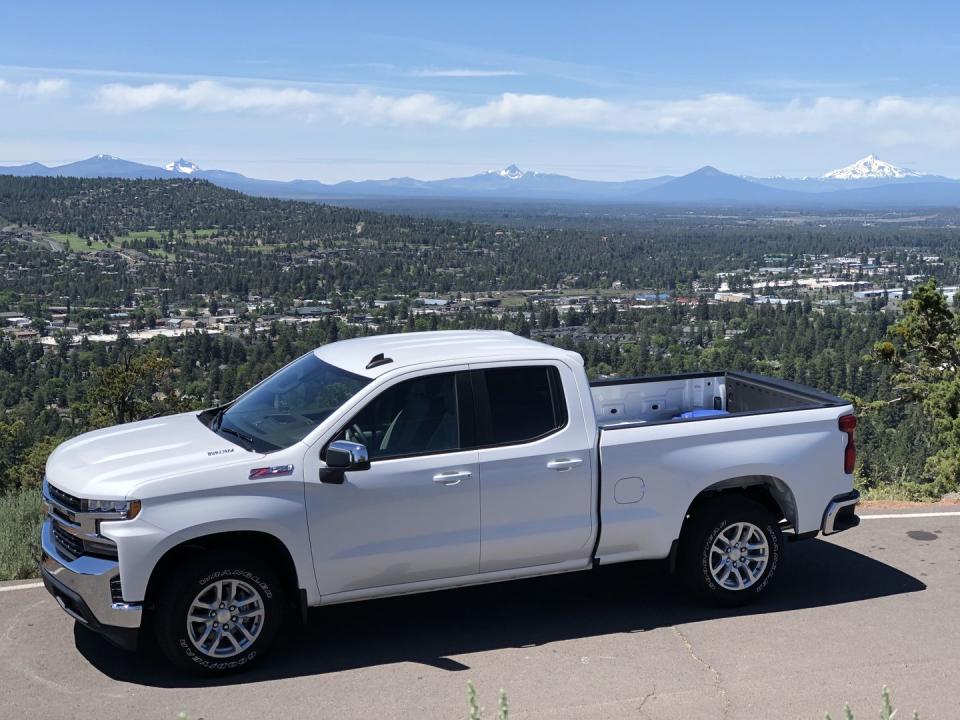
It's a great engine. The straight six is inherently one of the smoothest configurations, and the small diesel is quiet and refined. It's also plenty quick, with the variable-geometry turbo blowing 42.8 pounds of boost and the 10-speed transmission keeping the power in its sweet spot when you're accelerating and letting revs drop way low when you're loafing. On that front, Chevy says a RWD truck doing a steady 65 mph will get 30 mpg.
If you need your truck to double as a thrifty highway commuter, here you go. But if you need to tow 35,500 pounds, there's a truck for that, too.
('You Might Also Like',)

